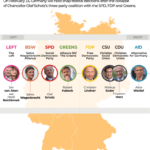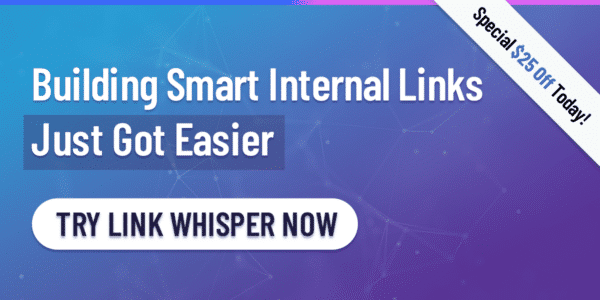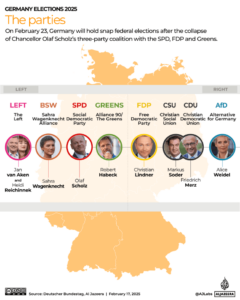The world of content websites has changed dramatically over the past few years, and Paul Thomas has been at the forefront of these shifts.
With over 25 years of experience in building and selling websites, Paul has successfully pivoted from traditional content-based sites to a subscription model.
His first subscription site, launched in 2018, now earns over $100k a year and attracts nearly 5 million visitors annually. His second site, launched two years ago, is on track to generate $30k to $40k per year with fewer visitors but a higher revenue per user.
In this interview, Paul shares how he built two thriving membership sites without relying on SEO and what lessons other entrepreneurs can learn from his journey.
Watch the Full Episode
Paul’s journey in online entrepreneurship began in the late 90s when he built and sold several content websites. But by 2018, he saw the writing on the wall—relying on SEO for traffic was becoming riskier as competition increased, social media dominated, and search engine algorithms changed unpredictably.
He decided to transition to a subscription-based model, focusing on audience retention rather than one-time website visits.
His first subscription site, launched in 2018, now earns over $100,000 a year and attracts nearly 5 million visitors annually. His second site, launched two years ago, is on track to generate $30,000 to $40,000 per year with fewer visitors but a higher revenue per user. The key takeaway? A well-structured subscription model can significantly boost long-term revenue compared to ad-based content sites.
One of the most critical aspects of Paul’s success is niche selection. Not all topics lend themselves well to a membership model. According to Paul, the ideal niche should:
- Have a dedicated audience that seeks ongoing information or interaction.
- Offer refreshable content that keeps people coming back (e.g., hobby-based communities, interactive tools, or regularly updated industry news).
- Provide a clear reason for users to pay—whether it’s exclusive content, premium tools, or community features.
Paul cites examples like AllTrails, Fishbrain, and FunTrivia—platforms that consistently offer new content or interactive tools that encourage long-term engagement.
Monetization Strategy: Freemium Model and Pricing
Rather than gatekeeping all content behind a paywall, Paul utilizes a freemium model, giving away a significant portion of content for free while reserving premium features for paying members. This approach allows him to build trust with visitors before converting them into subscribers.
When it comes to pricing, Paul prefers low-cost, high-volume memberships over high-ticket subscriptions. His first site initially charged just $2.50 per month, later increasing to a tiered model ranging from $4 to $20 per month. Additionally, he offers an annual plan that prices slightly above the average six-month retention period, encouraging more upfront payments.
Driving Traffic: A Social-First Approach (No SEO!)
While many website owners focus on SEO to drive traffic, Paul took a completely different approach—ignoring SEO altogether. Instead, he built his audience through Facebook and YouTube:
- Facebook Groups: He actively engaged in niche-related Facebook communities, providing valuable insights without direct selling. Over time, this built brand awareness and trust, leading members to visit his site.
- YouTube: He repurposed content into video format, using subtle call-to-actions to drive viewers back to his website.
His social-first strategy has allowed him to scale traffic to nearly 5 million visitors per year without worrying about Google’s algorithm changes.
Converting Visitors into Email Subscribers and Paying Members
Once visitors land on his site, Paul’s primary goal is capturing their email address. Rather than using traditional lead magnets, he offers users a free membership tier that grants access to additional content in exchange for an email sign-up. This method has been far more effective than typical opt-in forms.
His email strategy follows a 5:1 ratio, sending five content-rich emails before making a premium offer. He’s also found that being more aggressive with premium upsells has led to higher conversions without alienating his audience.
Key Takeaways from Paul’s Success
- SEO Isn’t Everything – It’s possible to build a thriving site through social engagement and audience retention instead of search traffic.
- Freemium Works – Offering valuable free content builds trust and creates a natural transition to paid memberships.
- Pick the Right Niche – Choose a niche where people need ongoing content or tools, ensuring long-term retention.
- Community is Key – Engage with your audience in forums, Facebook groups, and YouTube to build brand recognition.
- Email is the Ultimate Converter – Once you have a visitor’s email, you control the relationship and can nurture them into premium subscribers.
Paul’s strategy is proof that with the right approach, content sites can thrive without relying on Google. His long-term five-year commitment model has led to impressive results, and his latest project is projected to surpass his first site’s success. If you’re looking to build a sustainable online business, his insights on subscription models offer a valuable blueprint.












More Stories
Google Search Volatility Heats Up and These Sites are Winning
28 ChatGPT Prompts to Boost Your Monthly Income – The Aesthetic Abode
REV Media Group And Remix Partner To Revolutionize Malaysian Affiliate Marketing